 Needs Pictures: 0
Needs Pictures: 0
 Picture(s) thanks: 0
Picture(s) thanks: 0
Results 16 to 19 of 19
Thread: Cabinet scrapers
-
30th September 2015, 07:50 PM #16

A little tip. Once you get it going you will be looking for bits of wood to try it out on. The scraper can get very hot while in use, especially on the thumbs in the middle above the cutting edge. I stick a fridge magnet on the back and rest my thumbs on the magnet. Does a good job of slowing down the heat transfer.
-
30th September 2015 07:50 PM # ADSGoogle Adsense Advertisement
- Join Date
- Always
- Location
- Advertising world
- Posts
- Many
-
1st October 2015, 08:27 AM #17

A nexcellent idea, NC, but if you find yourself scraping large areas, often, maybe it's time to invest in one of the scraper planes?

After doing some big jobs, like a couple of kitchen counter tops with a combination of card scrapers and my old Stanley 80, I decided I wanted a LV scraper plane. It is a nice bit of kit, & a big advance on the 80, but they ain't cheap, so unless you do a lot of scraping, you won't get a very big return on your investment. In any case, I still prefer to use card scrapers for smaller jobs, they are just so versatile and maneuverable. I've made all sorts of odd shapes for special tasks like making saw handles - they speed up the finishing process no end. So the plane only comes out on occasional big jobs, but my aging arthritic fingers are grateful when it does....
I didn't 'discover' card scraper until I was well-launched into my woodworking career, they just weren't mentioned in our school woodworking classes, which seems odd to me, as we had a pretty thorough introduction to most common hand tools, & scrapers have been around a while! When I think about it, though, I had been introduced to them, I just didn't make the connection. I grew up on a farm, & well remember my father & uncle making handles for tools like mattocks & brush-hooks. They'd rough out with a hatchet (my father was incredibly deft with axes of all kinds!) refine with a crude drawknife, then do the final smoothing with bits of glass from a broken bottle. I recommend you wear leather gloves if you choose to try that.....

Cheers,IW
-
1st October 2015, 03:23 PM #18
 SENIOR MEMBER
SENIOR MEMBER











- Join Date
- May 2004
- Location
- Sth. Island, Oz.
- Age
- 64
- Posts
- 754

You mentioned trying to save a buck. I've also found that old (quality) saw steel makes excellent scrapers. However scrapers also come in all sort of other shapes and sizes (& formats) too.
Sometimes, when pressed for time, I've used an old well sharpened chisel that makes an effective scraper for old paint and other rough finishes. The edge won't last long, but you can remove a lot of old finishes really fast using the extra length and leverage of a chisel held at just the right angle. It must be the fine bevel of the chisel that makes it so effective. I've found older English made forge-laminated chisels like Sorby and Ward or quality tool steels from the (Tassie made) Titans & Stanleys seem to keep their edge longer. As the chisel's edge is square and can't be bowed, expect some corner gouging.
As for finishing scrapers then old saw plate will take a great hook if ticketed with care. The shaft of a screwdriver will work OK, but the harder and smoother the shank of the tool the better the scraper's edge will burnish and turn. There's some superb quality & stupidly expensive burnishers out there that will, I'm sure, do a great job. I prefer to use the shank of an old worn out solid carbide router bit (the extra long ones are best) mounted "upside down" in a wooden handle. The smoothness and hardness of the wolfram carbide requires much less pressure to work up a fine hook without any of the serrations that can mar your work.Sycophant to nobody!
-
1st October 2015, 07:10 PM #19

I'll add my tuppence here as I use scrapers a good deal. I find them useful not only in the traditional sense, that is, for smoothing down interlocked grain and small sections of tear out, but also for the control of stopping where wanted. Below is an example of that, where I was cautious of causing the dovetails to spelch (break out):

It is possible to get a wonderful finish on the right woods, such as Jarrah. In general, however, a scraped finish is not as good/clear as a planed finish ..
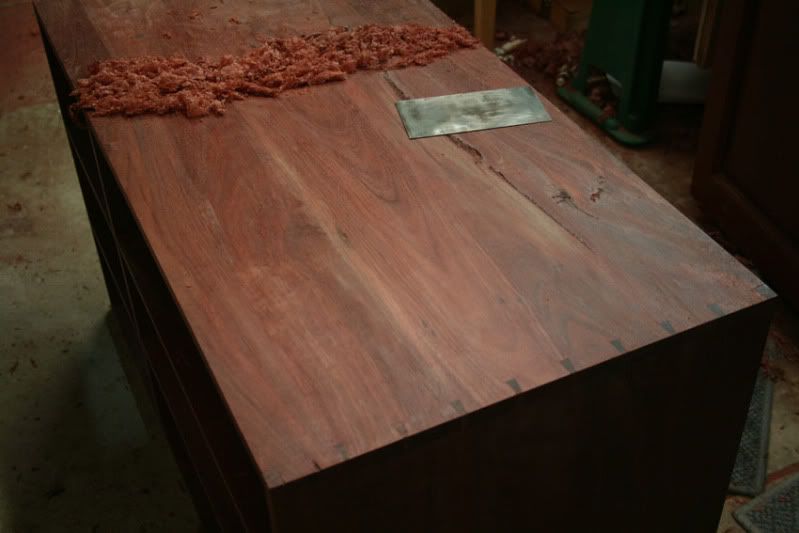
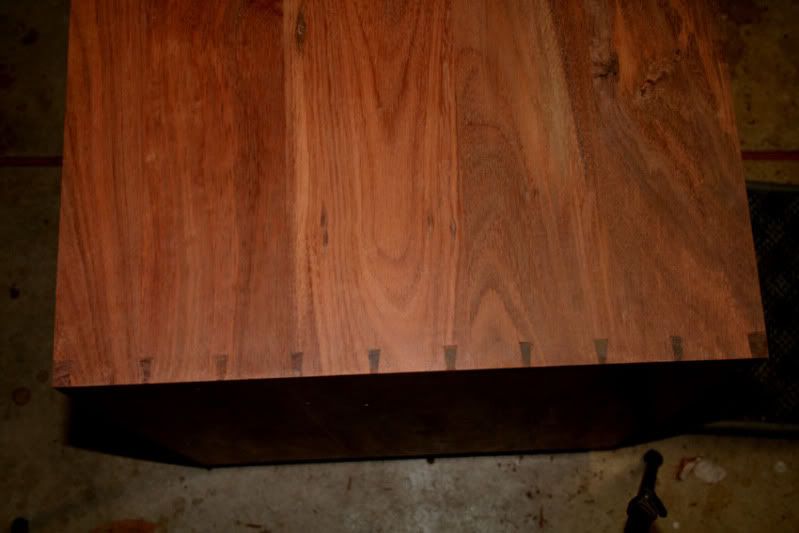
I also use scrapers for mouldings, making my own from bandsaw blades. Here is one made for a cove ..
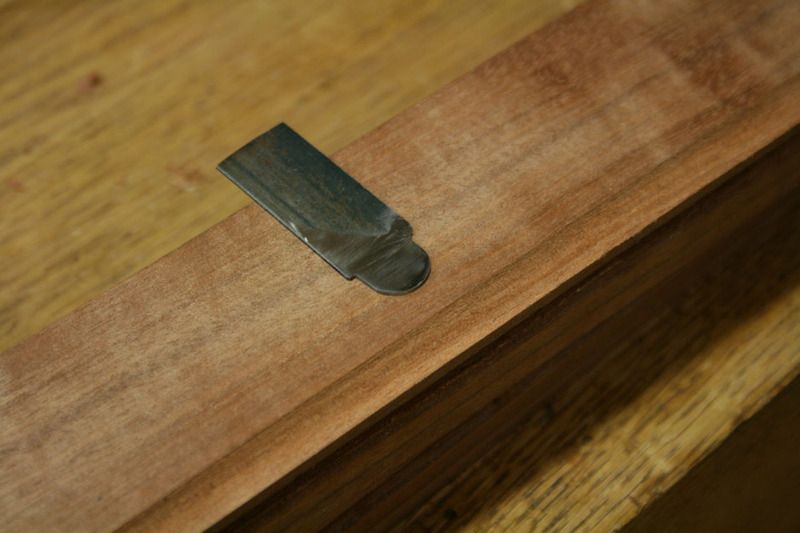
... which was used in a Stanley #66 beader ...
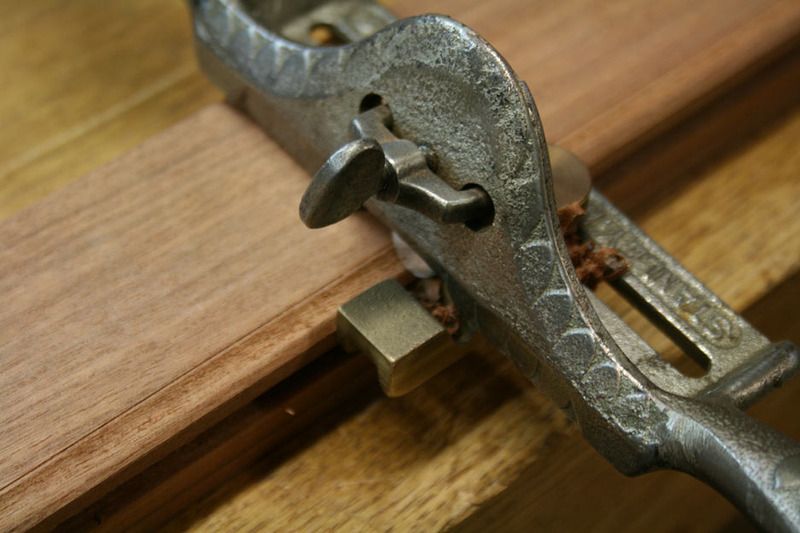
Now I must emphasise that the burnisher used to turn the burr/hook on a scraper is harder than the scraper stock. Screwdriver may work on old saws (used as stock), but may not. My burnisher is made from carbide rod, and this will turn a hook on anything. Also, it is a thin rod, which just adds more control and probably needs less downforce.
There are three points to achieve when preparing a scraper edge. Do these and you will always get it right:
1. Flatten (lap) the opposing sides and edge of the scraper blade, and polish to a high-ish level. It does not need to be 8000. 3000-4000 is good enough. I am only happy with a well worn 600 grit Eze-lap diamond stone, which after 10 years is closer now to 3000 grit.
2. "Draw out" the steel before turning a hook. This means, place the blade flat on the bench and run the burnisher over the flat top, angling down about 5 degrees, trying to pull the metal outward.
3. Turn the hook twice, not once. The first time use several strokes at moderate downforce at 3-4 degrees. Then do the same again, but at 5-6 degrees.
There is one type of scraper that all should try. You will be amazed at the result.
Find an old plane blade about 3/16" thick, and cut off a healthy section from the rear. I used O1 steel. You can add any shapes you prefer. Mine has a flat, and different curves.
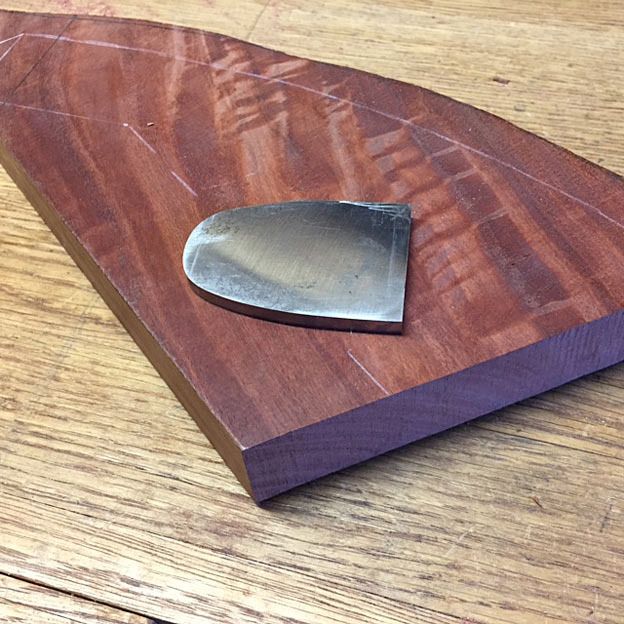
Now set up your grinder so that the blade is square to the wheel. I used a 180 CBN wheel here. Grind a hollow all the way around, just deep enough that you can feel the burr on the face edges.
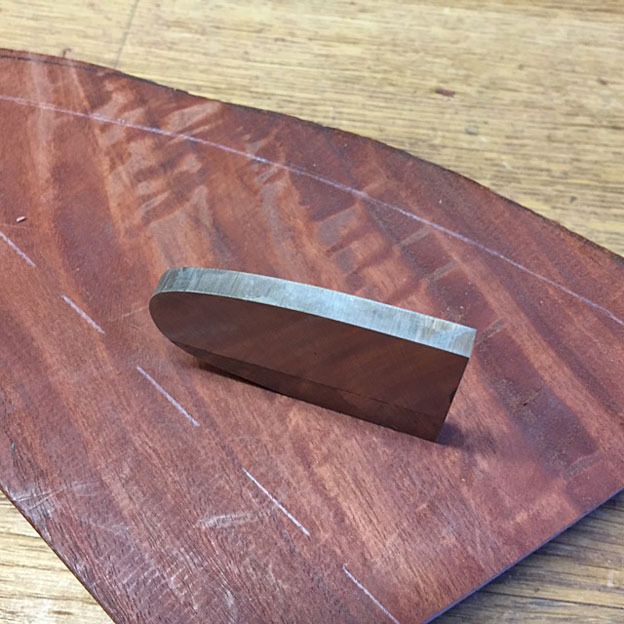
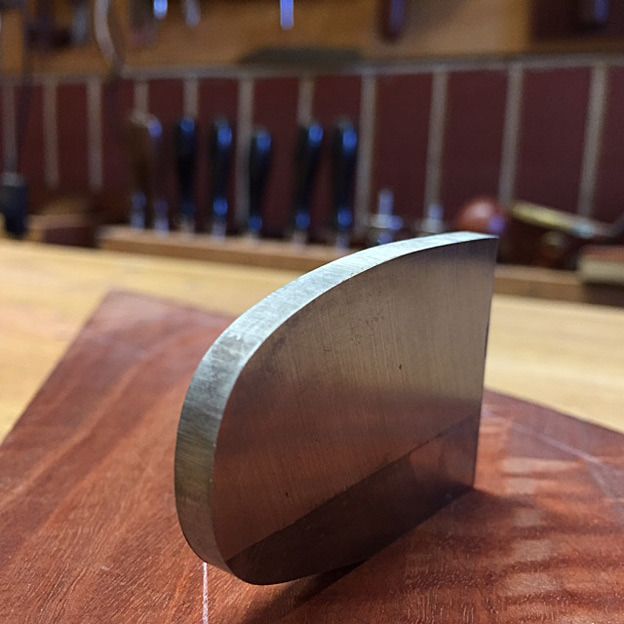
Now use it as is. This will not create as smooth a surface as a well prepared cabinet scraper, but it will help shape or remove waste really fast and leave behind a pretty decent surface.
Below are examples on interlocked fiddleback Jarrah, mostly running across the grain.
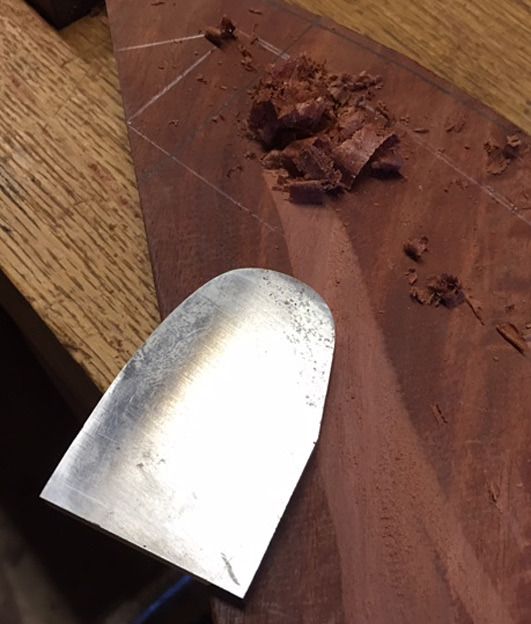
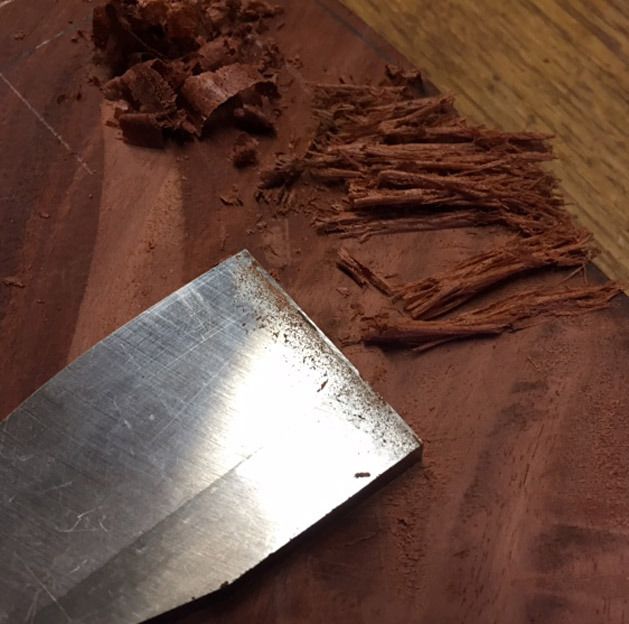
Regards from Perth
DerekVisit www.inthewoodshop.com for tutorials on constructing handtools, handtool reviews, and my trials and tribulations with furniture builds.
Similar Threads
-
Scrapers
By pmcgee in forum HAND TOOLS - UNPOWEREDReplies: 7Last Post: 9th January 2013, 06:23 PM -
Cabinet (aka card) scrapers in woodturning
By rsser in forum WOODTURNING - GENERALReplies: 4Last Post: 25th October 2011, 05:49 PM -
Dodgy cabinet scrapers
By Bodgy in forum HOMEMADE TOOLS AND JIGS ETC.Replies: 3Last Post: 17th August 2005, 08:09 AM -
Cabinet scrapers
By Arron in forum HAND TOOLS - UNPOWEREDReplies: 14Last Post: 28th September 2003, 08:25 PM



 Thanks:
Thanks:  Likes:
Likes: 


 Reply With Quote
Reply With Quote